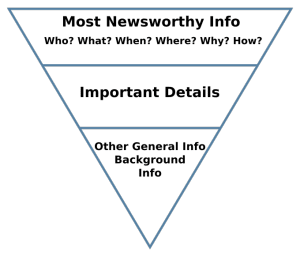
The earliest and the most primitive marketing method recorded in history was probably a guy yelling out his wares at a street bazaar instead of simply standing by with his products! Since then, marketing methods have become more sophisticated, marketers have learnt about the 4 Ps and other technicalities like marketing funnel, inverted pyramids and the likes.
It is my experience that if this traditional marketing knowledge was demanded off digital marketers today, many of them will give you a blank stare! These are digital marketers armed with jargon like social media marketing, search engine traffic, ‘Like’s and ‘Share’s, and everything in between. However, the internet has played the role of a midwife, severing their link with traditional marketing practices.
Is that the right way for us digital marketers? Have we no lessons to learn from traditional marketing methods?
I ask this because some aspects of marketing are common to what early marketers thought and what we are thinking today. The most common among them is that the buyers still want the same thing: best value for their money. They are still gung ho about an offer or a deal, they are still passionate about comparing items and prices.
So why should we not learn from traditional marketing methods and make them the bedrock of our digital marketing initiatives? I strongly believe that with the right insight, you can build that bridge to connect these seemingly disparate methods of marketing. Let us explore a little on these lines.
Consider the 4 Ps of traditional marketing.
Product: Online channels give you an excellent opportunity to figure out what kind of product and features will effectively tap the potential marketing available. You can ask for consumers about their ideas and opinions. You can study the competition and use this information into developing the product prototype or Minimum Viable Product (MVP).
Price: Pricing has a very important role to play, both in traditional and digital practices. The price tag will help you understand what kind of buyers will be interested in buying it. In fact, you can conduct online polls and devise ways to check if the price tag is viable at all for a particular consumer segment. You can also take a look at the price tag from the perspective of the competition around your brand.
Place: That brings us to the 3rd P. In the traditional format, place was more about where you would get the largest consumer group and catering your marketing message accordingly. In the digital age, the analogy is on the various online haunts like Facebook or LinkedIn. It is also about the kind of message you want to use, depending on the place where these potential customers perch themselves. Likewise, the message will comprise of different types like articles, blogs, videos or infographics.
Promotion: In the traditional exercise, promotion would be about deciding which channels of communication offered the best dividends. For example, selling a bar of soap will bring in a medium like TV and newspapers, even the radio. In online parlance, promotion contains of a mix of online avenues like SEO, social media marketing and video blogging, to name a few.
The crux of the idea is very simple. Learn from the past to improve the present so that the future can be better. Marketing is a skill set, like writing or painting. Anyone having this skill set can be a good marketer, no matter what the medium. The only difference in the two forms of marketing, traditional and digital, is probably in the use of the internet. Of course, there are some advantages of digital marketing over its traditional counterpart.
For example, the budget of digital marketing initiatives is nothing compared to the traditional method of buying air slots on TV or radio, even newspaper advertisements and billboards. Additionally, digital marketing methods can be automated to a large extent, with one aspect feeding the other to rotate the cycle.
Personally speaking, I have picked up the nuances and strategies of digital marketing by studying traditional marketing techniques and the foundations of understanding buyers and markets.
Have you learnt anything this way? Chime in here!








0 Comments